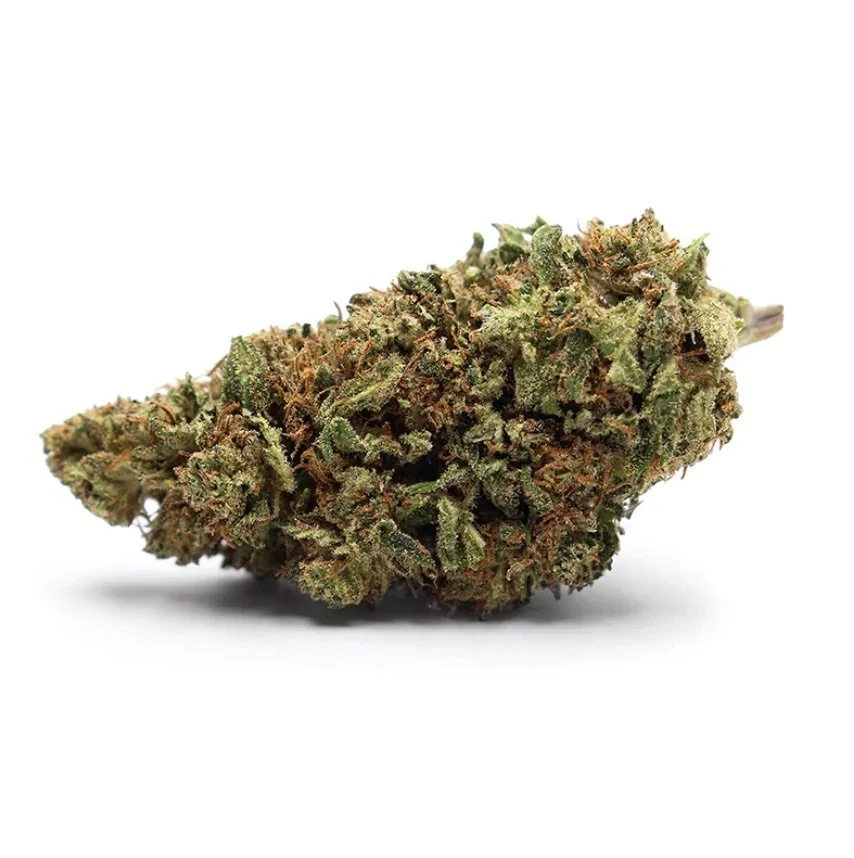12 Best Haze Strains You Need To Try
Check out the first 6 Strains Below. See the full list of Haze Strains Here.
Hawaiian Haze
Hawaiian Haze Strain
A well-known Sativa bud for the cannabis connoisseur that knows his/her haze strains. Hawaiian Haze flower usually comes with a high THC content that oscillates around the 20% mark. The strain is known for its rapid onset and euphoric effects that get your brain going. The strain reportedly makes most consumers feel social and talkative, however, if you’re planning to smoke this one in a social situation it only works if your tolerance has been previously been built up.
Botany Farms offers a THC-free option that does not get you high, on the contrary, it packs a dose of vitality, creativity, and focus. This is mainly due to the product’s high CBD content which sits around the 19.7% mark.
Suver Haze
Suver Haze
This sativa-dominant strain features a very high terpene profile. People who use it say that this is an ideal morning strain to pair with your cup of coffee or tea. Its sativa profile gets you energized and keeps you awake while the CBD content lets you stay clear-headed and relaxed. The high terpene content in Suver Haze buds has a fragrant flavor profile of sweet fruit, fresh citrus, and pepper undertones. Botany Farms Suver Haze tests at a steep 21.3% CBD, making it a perfect option to kick off a long day
Cannalope Haze
Cannalope Haze
An extremely Sativa-dominant strain ranging in 90-100% Sativa genetics with a high THC content that can soar up to anywhere between 20% and 30% if grown right. CBD is not particularly high in this bud, so expect a potent cerebral high with a melon flavored undertone to it (hence the name).
Origins for this strain are a bit confusing but have been traced back to a crossbreed between Mexican landraces with Haze Brothers. Quite often used to make hash because of its sticky trichome genetics and its heavily flavorful profile.
Super Lemon Haze
Super Lemon Haze Strain
Not quite as Sativa dominant as Cannalope but dominant enough at 70% to consider it a true Sativa enthusiast’s delight. Believed to be a cross breed between Lemon Skunk and Super Silver Haze (another strain that’s coming up shortly), this cerebrally potent bud sits at almost 20% THC which explains its back-to-back wins of the High Times Cannabis Cup.
Expected from its name, SLH comes packed with citrusy scents and aromas. A highly coveted strain by outdoors growers due to the tree’s unparalleled height, Super Lemon Haze is meant to be smoked as a day-time strain and recommended for days when there isn’t much to do because it’s cerebral high is potent and long.
Super Silver Haze
Super Silver Haze Strain
This Super Lemon Haze parent is in itself bred from one of my favorite indica-dominant strains ever, Northern Lights and crossed with another classic original, Skunk. Despite it’s indica-dominant parent, Super Silver Haze is a 70% Sativa-dominant strain that delivers a potent cerebral high powered by it’s 22% THC content.
Expect some of the classic blended scents of Skunk and Northern Lights to be accompanied by a potent cerebral high that requires a bit of tolerance to be enjoyed. If tolerance is an issue with you, Super Silver Haze will take you on a ride.
Blue Haze
Blue Haze Strain
Yet another Sativa-dominant strain that’s also bred from an indica-dominant parent. A crossbreed between the classic indica strain Blueberry and the renowned Sativa-dominant strain Amnesia Haze. Blue Haze is notorious for its blueberry like aromas and sweet taste, it’s high levels of THC ranging the 20% mark, and its combination of indica/sativa effects.
Most people report feelings of euphoria and happiness upon the first couple of inhales. Once the high begins to settle, the blueberry lineage of this strain will kick in for a satisfying end of day smoke. A nice strain to go for around 7 pm or so, when you feel like staying up a bit more, but not too long into the night.







